
Photography by Lyle Owerko

Do you remember? It was an unforgettable time. The kind that, in hindsight, you can say, “something really unique was happening then”. But the late 1970s was a time when people with very little, especially in New York City, were just making the best with what they had: each other, music, and a new type of portable sound system — the boombox.
In
Lyle Owerko’s new book
The Boombox Project, the New York-based photographer intended to turn subject into art, and photograph his personal collection of radios. But once he started hearing stories about his topic, the outcome shifted dramatically. In this book, you are invited to listen in on some of the most iconic MCs, musicians, and artists of that generation, recollecting about life on the streets and how the boombox grew to be so much more than just another radio. Filmmaker Spike Lee starts the book off with a foreword about Joe Radio, the first guy he ever saw listening to a portable radio on the corner of his Brooklyn block. From there, Owerko reveals stories from the likes of LL Cool J, Fab 5 Freddy, Kool Moe Dee, and Rosie Perez about their first encounters and experiences with the boombox. All their memories share a common thread: community. Today, we hear so much about sharing online, whether it’s music files or social networking. But the true pioneers of electronic sharing came from the boombox generation. It was a time of great creative growth.
(more…)
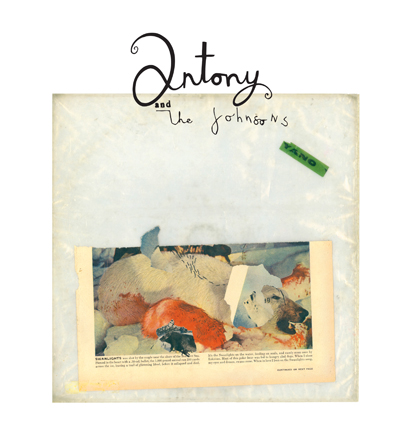
Images courtesy of Abram's Publishing

With much of the music shared online today, and the recording industry in crisis, artists increasingly turn to new means of distributing their work. Antony Hegarty, the transgender singer, whose ironically (or unfortunately, depending on one’s point of view) named band, the Johnsons, is no exception. For his new album,
Swanlights, Antony produced a book by the same title, (
Abrams Image, $35), which includes the CD.
Antony is a famously tender and sensitive artist who aches in our rough world. His self-declared creed is seeing the world from a feminine perspective (presumably, it’s the males who are solely responsible for messing everything up, because they are too aggressive). In the short essay accompanying the book, Antony calls out, “Circles of mothers, please usher in an era of profoundly feminine governance.” But what if one of those mothers is Margaret Thatcher?
Swanlights is reflective of Antony’s soft longing for escape from our male-induced filth, whether by dieing or by ushering in matriarchy. The music on the CD is gentle and full of feeling, especially the piano that is by turn forlorn and passionate. But it is Antony’s voice, powerful and yearning, that leaves the most lasting impression on the listener.
The art in the book is another matter. Its content is mostly made up of collages or old newspaper cutouts drawn over with haphazard pencil lines (Antony calls them “unconscious lines or spirit lines”).
(more…)

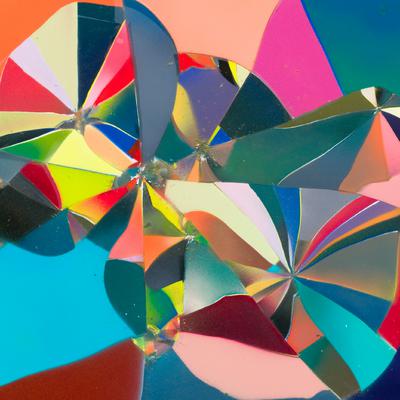
True Panther Sounds
 Ring
Ring is the intimate debut from Cameron Mesirow. Known by her stage name, Glasser, Mesirow’s atmospheric musings blend the styles of Florence and the Machine lead singer Florence Welch with Natasha Khan of Bat for Lashes. While her former tour-mates, the xx, Jonsi of Sigur Ros, and Delorean reflect her sound’s wide appeal, Mesirow is quite the wandering spirit. Shoe stores and airplanes were unlikely places in which she recorded her 2009 EP
Apply. Meanwhile,
Ring manifests these drifting tendencies by diverging in different directions and withholding both a definite beginning and ending. “Apply” marches in with tribal drums and reverb, giving way to hypnotic chanting on “Plane Temp” and “Mirrorage” as well as tambourines and mighty bass on “Clamour”. But
Ring is a complicated record and beneath the tender vocals and graceful movement from one track to the next, there is a hint of darkness.
Audio clip: Adobe Flash Player (version 9 or above) is required to play this audio clip. Download the latest version here. You also need to have JavaScript enabled in your browser.
Buy this at Other Music or iTunes. After the jump, check out the video for “Apply”.
(more…)

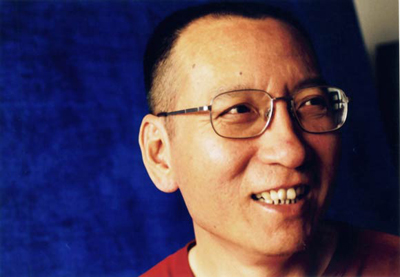
Photography via The Los Angeles Times


Liu Xiaobo was awarded the Nobel Peace Prize this month by the Nobel Committee in Oslo “for his long and non-violent struggle for fundamental human rights in China”. The third winner to be awarded the Peace Prize while imprisoned, Xiaobo is also the first person from China to win the prize. Arrested in June 2009 for “inciting subversion of state power”, Xiaobo was sentenced to eleven years in prison on December 25, 2009 for his concerted efforts urging Chinese leaders toward democratic reform. The prize is seen by many to be a rebuke to China’s human rights record.
Xiaobo has long lead impassioned efforts to criticize and critique his nation’s approach to human rights. When he found himself in the United States during the Tiananmen Square protests in 1989, he returned to China and joined the students. His eventual persuasion of many students to leave the square is credited with saving an untold number of lives. He has since been blacklisted and barred from publishing in his own country.
When his wife, Liu Xia, visited him to give him the news of the Nobel Peace Prize, she was detained by Beijing police. She remains under house arrest at this time, communicating to the outside world via Twitter. She writes: “Yesterday, Norwegian diplomats came to offer support for me and were barred outside the main gates.”
(more…)

Photography via the Baltimore Sun

Recently, the committee that awards the Nobel Prize for Literature has favored obscure writers that, though talented, have little international reputation or influence. Bucking this trend (and odds that the prize would go to a poet, a Kenyan, or Cormac McCarthy) the Nobel Prize for Literature was awarded to Peruvian novelist Mario Vargas Llosa, a giant of world literature and a major figure in the Latin American Boom of the mid-late 20th century.
Vargas Llosa was awarded the prize “for his cartography of the structures of power and his scathing images on resistance, uprisings, and individual defeat”. That is unquestionably the most precise assessment of his work you will find. Beyond that sentence, Vargas Llosa is remarkably difficult to define. His body of work is, among both recent Nobel laureates and Boom authors, arguably the most varied. In his novels one can see threads of many of the major literary movements of the 20th century, especially modernism, existentialism, and postmodernism.
Vargas Llosa is also notable for his politics. Unlike many other Boom authors — including fellow Nobel laureate Gabriel Garcia Marquez, who he once famously punched in the face — Vargas Llosa soured of the Cuban revolution and its leader in the mid ’70s and has slowly drifted to the political right ever since. After leading a protest against the nationalization of the Peruvian financial system in 1987, he launched a presidential campaign, and endured abuse and death threats, before losing his bid in 1990.
(more…)
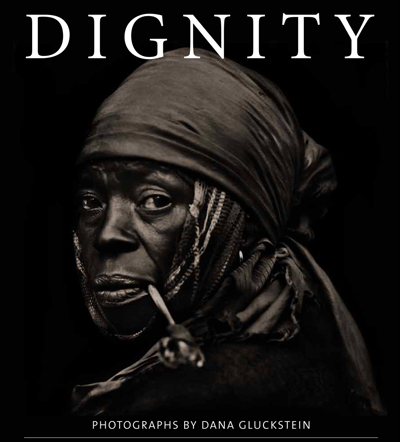
Dignity, cover. Photography by Dana Gluckstein. Click for Slideshow

When Dana Gluckstein made her first trip to photograph indigenous Haitians in the 1980s, she didn’t know she was embarking on a three-decade-long journey. Led by instinct, Gluckstein — then a young photographer shooting for advertising campaigns and annual reports — simply wanted to do some work that felt more profound and personal. “I always knew I wanted to go deep, rather than stay on the surface,” she says. “I knew this was important work.”
In the twenty-five years since, Gluckstein has indeed gone deep. She’s traveled far, both in terms of air miles and insight into the human condition. Her quest to document indigenous peoples — many of whose cultures are threatened — has resulted in the stunning book Dignity (powerHouse Books, $39.95), published this month to coincide with the 50th anniversary of Amnesty International.
As Gluckstein is quick to point out, Dignity is more than just a beautiful coffee table book. It’s also a passionate call to action. While indigenous peoples comprise six percent of the global population and are among its most impoverished and oppressed inhabitants, they remain largely invisible and it’s easy to ignore their plight.
Shot in black and white on a vintage Hasselblad, Gluckstein’s images show us the beauty, strength, and vivacity of these “first peoples”. Often intimate, sometimes breathtaking, the photographs in Dignity have a classical feel and a rich, velvety softness. Gluckstein’s artistry is matched by her deep compassion for her subject matter — a compassion that has sustained her through a quarter century of work.
(more…)
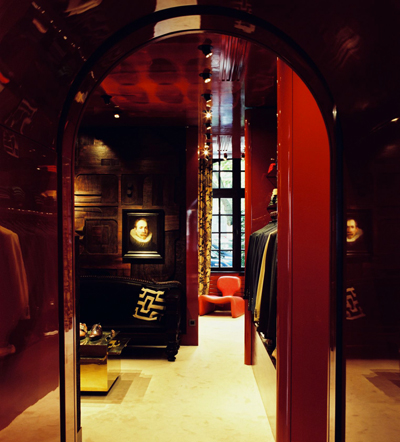

Belgian fashion is no longer a secret of the fashion cognoscenti. Having treated us to some of the most exciting fashion in the past two decades, the Antwerp Six and their heirs are now in the Pantheon. If there is one thing that had been understated about them it’s their influence on menswear. For example, few people know that Dries van Noten, known for his mastery of women’s clothing, started out as a menswear designer. His first five shows in Paris were men’s shows, and his family was in the garment business and owned a men’s-suits store in Antwerp.
Today, van Noten is acknowledging his roots by opening his first freestanding menswear store in the left bank of Paris. And we mean bank here — the boutique is located on Quai Malaquais, its windows facing the Seine. It is only a few doors down from van Noten’s women’s shop, which ensures that your significant other does not get bored while you pick out that perfect dress shirt for the casual dandy wardrobe that van Noten has become so good at.
The space is a former gallery of Primitive Art, and van Noten was very careful to preserve its original décor of rufous lacquered wood that dates back to 1975. And just so you know that you’ve made it, you can contemplate a genuine Van Dijck from van Noten’s own art collection while matching your tie and your cufflinks.
Dries van Noten, Men, 9 Quai Malaquais, Paris.

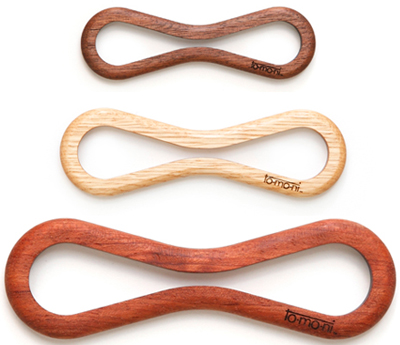


When industrial designer, Naoto Yoshida saw how much wood is wasted in the furniture-making process, he decided to give it a new life. The son of an award-winning furniture maker, Yoshida’s company to.mo.ni recycles piles of beautiful wood scraps — once used as firewood or thrown away — to make unique everyday objects. His latest design, WrapWrap, mixes old-world craft with technology, allowing you to adjust your obtrusive iPod headphone wires to the perfect length. WrapWrap comes in walnut, oak, rosewood, or wenge, and is also available in medium and large sizes for desk wires (think mouse and firewire cables) and thicker electrical cord management.
Mr. Yoshida hails from Asahikawa, Hokkaido, Japan — a region rich in woodcraft tradition. He is also the executive officer of mickle, a design collective of local craftsmen and artisans who focus on connecting the community with artists and their work.
(more…)

All photography by Alfred Stieglitz. Courtesy of National Gallery of Art and Skira/Rizzoli.

The word “ambitious” barely covers the life and work of Alfred Stieglitz. He was a photographer, a gallery owner, a magazine editor, and probably the man most responsible for bringing photography to the art world. Along the way, he also found time to marry a young Georgia O’Keefe and seal her reputation as a painter.
As a photographer, Stieglitz experimented with many subjects, from New York street scenes to cloudscapes to sultry portraits of O’Keefe. Behind all of his images was the driving philosophy of “pictorialism”, a belief that photographs should look like paintings. His most celebrated image is The Steerage, a picture of poor immigrants on a steamship. Where another photographer might have focused on faces and gestures, Stieglitz makes it a Cubist-like study of form and light.
New York, and its teeming street life, was a subject Stieglitz returned to throughout his career. In
Alfred Stieglitz New York, the city is shown over a period of five decades, but always filtered through Stieglitz’s unique personality. Beauty and desolation are given equal weight. As Georgia O’Keefe once said of her husband, it was as though “something hot, dark, and destructive was hitched to the highest, brightest star”.
(more…)

Images courtesy of Decker Yeadon

The dream of a clean energy future may seem as elusive as a desert mirage, but against the sandy backdrop of Ras Al Khor Wildlife Sanctuary in Dubai, the design team of Martina Decker and Peter Yeadon envisions what might be possible with the right materials and a vibrant imagination.
Light Sanctuary, a maze of auburn-tinted solar panel ribbons, may only exist as a concept for the moment; but the Decker Yeadon firm’s innovative plan for a photovoltaic installation could prove to be less a mirage than an oasis of clean energy generation. The design was created as a proposal for the Land Art Generator Initiative, a contest seeking environmental art projects that function as sources of renewable energy that are geared specifically toward one of three sites in the United Arab Emirates.
Though extremely ambitious, a fully realized, completely assembled version of Light Sanctuary is absolutely possible, according to Decker. Spread across nearly 100 acres, Decker and Yeadon’s sculptural energy plant would incorporate twenty-five miles worth of dye-sensitive solar cells that would collectively generate 4,592 megawatt-hours of energy each year. These flexible solar panels are a cutting-edge third generation photovoltaic technology, which makes use of the light-absorbing capacity of organic dyes derived from plants. Though the panels aren’t known to produce as much electricity as other solar technologies, they are most effective under higher temperatures, making the hot desert a prime location for the installation.
(more…)





 Facebook
Facebook Permalink
Permalink Digg
Digg Reddit
Reddit LinkedIn
LinkedIn StumbleUpon
StumbleUpon Tumblr
Tumblr














